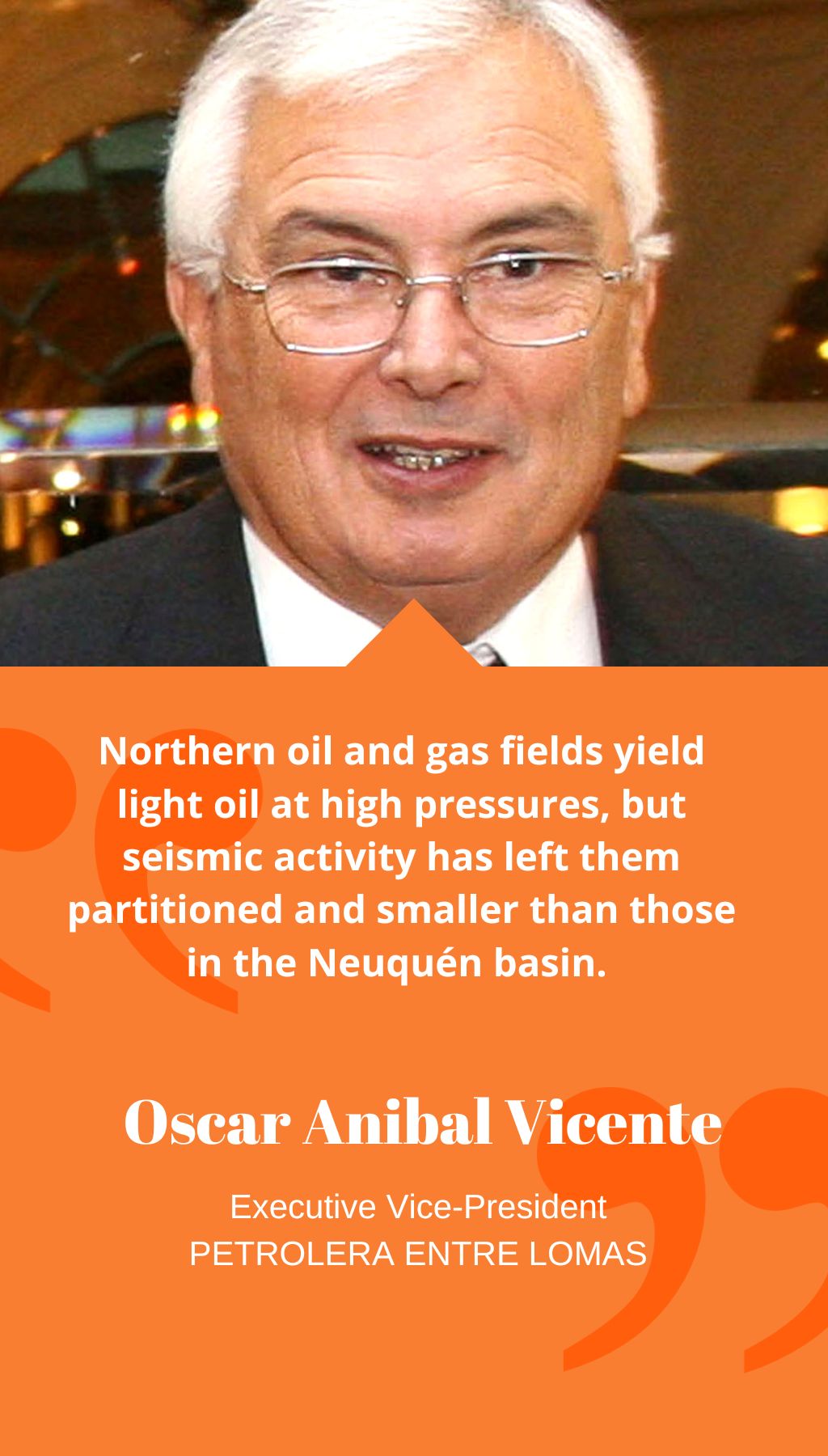
- Argentina | 22 May 2017

Yes, Petrolera Entre Lomas, previously known as Compañía Perez Companc, was founded in 1968 when YPF and Compañía Perez Companc signed an agreement to explore the Entre Lomas area with the technical and financial support of Apco Oil. At that time, YPF was wholly owned by the Argentine government and represented the state in the agreement, but did not play a technical or financial role in the development of the area. However, the permit for the Entre Lomas area was re-negotiated in 1993, during a time when the regulatory regime governing the oil and gas industry had significantly changed.
Can you explain why PEL has decided to exclusively operate in the Neuquén basin?
Sure, PEL chose to focus on the Neuquén basin due to its geological advantages. Argentina has 11 source rocks, three of which are in Neuquén. The geological characteristics of certain fields in the Neuquén basin facilitate drilling. Most oil lies between the Jurassic and the Cretaceous. Additionally, the Neuquén basin is located in the Mesozoic zone, which is not prone to earthquakes, unlike the basins in the north of Argentina, which are located in the Paleozoic zone and prone to seismic activity. Northern oil and gas fields yield light oil at high pressures, but seismic activity has left them partitioned and smaller than those in the Neuquén basin. The seismic tranquility of the Neuquén basin has allowed for expansive fields, like Loma La Lata, and thick ones, like Vaca Muerta.
PEL’s oil production decreased between 2010 and 2014 while its gas production increased. Can you explain why this occurred?
Certainly, PEL’s oil production fell during that time because of issues related to payout times and permit expirations. At one point, PEL was faced with the decision of investing in mature wells from which the company would recover all operating costs only after six years, but whose production permits would expire within two years. PEL did not invest in these oil wells because the payout time exceeded the time remaining in the production permits, and as a result, the production of these wells fell. On the other hand, PEL’s gas production increased due to subsidized gas prices. Before the government began subsidizing gas production, local gas producers were paid $2 per million BTU while gas importers were paid $17 per million BTU. Argentine gas producers now receive about $7.50 for newly produced gas. The government decided to subsidize gas production after YPF convinced it to do so, and all gas producers have benefitted from the regulated price.
What is your analysis of YPF’s effort to develop unconventional resources in Vaca Muerta?
YPF’s projects in Vaca Muerta are projects that only a hybrid company like YPF can undertake. The shareholders of a purely private company would be reluctant to allow the continuation of a project that does not yield short-term profits. Yet, even YPF will have to diminish their wells if international oil prices remain as low as $50. The oil and gas companies pay costs at almost $15 per peso, though the official exchange rate is at $9, and as a result, companies must pay the difference by increasing the productivity of wells, reducing costs, increasing production, and so on.














